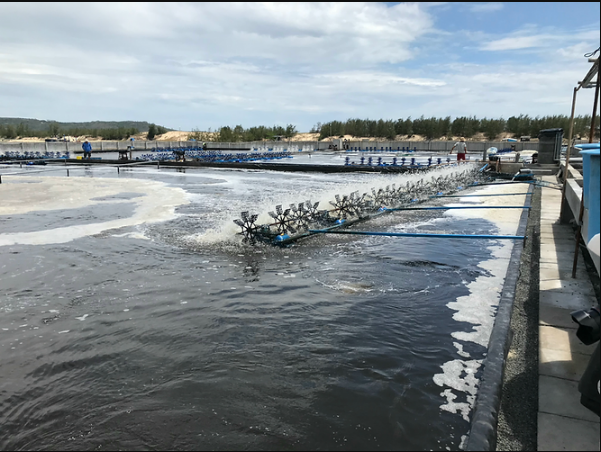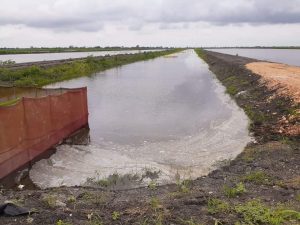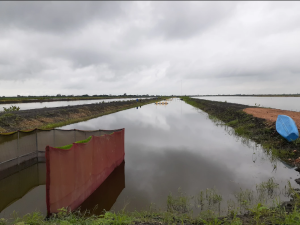Bacteria are thought of as being primitive. This is far from reality. They are highly evolved and well adapted to the myriad of environments that a given species and its many strains may occupy. They constantly evolve in response to changing environments and adapt accordingly. They do have some limitations, the nature of which are frequently glossed over. If I were in the market for products of this nature I would be concerned if I was seeing puffery based claims of benefits that are not supported by science. It is a safe bet that misspelled bacterial names are not necessarily solely a reflection of spell-checking errors.

MYTH 1
We know exactly what species and strains of bacteria are in any given environment so we know that when we add external sources of bacteria what will happen.
Some years ago, there were a few scientists that voiced that they thought we might have isolated all of the bacteria that there are from given environments. As molecular biology has increased in its scope and utility, we are able to detect the biochemical fingerprints of bacteria without culturing them. We now know that most of the bacteria present cannot be grown up on media. We also know that what we can culture is a tiny fraction of the total species present. What appeared to be simple turns out to be far from it. The environments that we use to culture shrimp and fish in are loaded with complex mixtures of microbes that are constantly being impacted by each other and by the various inputs and outputs. Adding bacterial mixtures appears to be useful in some instances in terms of bringing about short term changes (such as reduction in organic matter) but there is a lot more to be learned.
MYTH 2
When someone grows large numbers of bacteria in noncontrolled systems the only bacteria that will proliferate is what they add.
In my opinion, perhaps the single most dangerous practice that farmers are being encouraged to engage in is the pond side culture of mixtures of various bacteria and fungi without quality control. Powdered products are frequently contaminated by a myriad of fungi and airborne bacteria. This makes it less than straightforward that culturing them en masse will result in only what is purported to be in the initial inoculum. Microbiologists will tell you that even under highly controlled conditions this is uncertain. With no to little quality control the risks of adding and/or creating potential pathogens is not small. Bacteria readily exchange genetic material and encouraging a practice that ensures this is at best, risky. The risks far outweigh any benefits. Under ideal conditions many vibrios double in 10 to 15 minutes. When present as contaminants they readily outgrow any other bacteria that might take an hour or more to double. Many farmers are dumping potential pathogens into their ponds.
MYTH 3
Nutrients are never limiting.
As with all living organisms, bacteria have metabolic requirements for specific macro (such as proteins, fats, carbohydrates, etc.) and micronutrients (vitamins, minerals, etc.) When one grows bacteria in a highly controlled environment, such as a fermenter, it can be challenging to prevent contamination and to allow the process to proceed to where it needs to go. Depending on what one is trying to accomplish, specific nutrients may need to be added to ensure that the bacteria have what they need to grow and function in the manner that they need to. An example might be that with certain nutrients the bacteria produce a valuable metabolite at a specific stage of development. If and when the critical nutrients are depleted the metabolite can not be produced. This is true whether you are using a fermenter or looking at what is happening in any given aquatic environment.
Competition for nutrients is likely the main mechanism of action of the vast majority of microbial products being sold into aquaculture. They outcompete other microbes in the production environment for certain macro and micronutrients in the short term via the production of powerful enzymes that degrade organic matter and impact other aspects of water quality. Without these the bacteria eventually die. This, more than likely, is why these products need to be added repeatedly. Nutrients are constantly being used and replaced when shrimp are fed.
MYTH 4
The best products are those with the highest bacterial loads to start.
There is no biological basis for this. All bacteria need nutrients to grow. Some, such as the Bacillus species, will form spores when critical nutrients run out or the environment becomes hostile for other reasons. Most simply die. What limits the ability of bacteria that we add to production systems are several things. The environment (temperature and salinity are two factors) has an impact as does the presence of bacteriophages (viruses that kill bacteria) and species of competing bacteria (and other microorganisms) that may produce bacteriocins (antibiotics) among a few others. The most important limitation is nutrient related. Many of the enzymes that all living organisms produce require cofactors. These are micronutrients, typically a metal ion, such as iron, zinc, magnesium, or a vitamin, etc. When these become limiting the enzymes cannot function. If their role in the host metabolism is critical for survival, the host will die. Therefore, starting out with excessive high numbers of bacteria whether it is a single species or a dozen makes no sense biologically as there are simply not enough nutrients to support the growth of all of them. No one knows what the least number of bacteria is that one can start with to see the desired benefit, although anecdotal studies suggest that it is well below what most products contain.
Spore forming bacteria germinate at differential rates and have varied enzyme profiles. Much as there are differences between bacterial species and strains as to how rapidly they grow and divide, some species germinate much faster than other others. It stands to reason that those species and strains that become metabolically active quicker will dominate over those that lag. Nutrient limitation will ensure that the first to feast prevent those that come in after from easily accessing the nutrients that they require.
MYTH 5
One can readily mix spore formers with non-spore formers, and they will all survive equally well under the same conditions of storage.
Most of the companies that ferment Bacillus spores will tell you that blending spores with viable metabolically active bacteria or fungi is not conducive to these added organisms surviving for a significant period. Many of these die off under the normal storage conditions. They may require refrigeration to maintain shelf life, or they must be produced in a manner that is costly (spray drying or freeze drying) and increases the chances that blending with spores will reduce their viable shelf lives. Much as with yogurt where claims of viable bacteria for the entire shelf life require the addition of very high levels, one cannot be sure what is alive and how much of it is alive.
MYTH 6
These products are probiotics that will have a huge impact on animal health and disease resistance and tolerance.
The agreed upon definition of probiotics (WHO/FAO) is:
living organisms (bacteria or fungi as examples)
that are fed to an animal (they must be ingested orally) that colonize the digestive organ surfaces, becoming a part of the microbiome (not as simple as it sounds by a long stretch) and that has a positive impact on the animal’s health. This is widely held to be due to the production of metabolites that favor the animal in a manner that makes them better able to tolerate disease.
The term has become so widely misused that for all practical purposes any bacteria used in any way on any animal, plant, environment, etc. is now called a probiotic.
This has resulted in a great deal of easily exploited confusion about what is really happening. Colonization of the gut is uncertain and claims about impacts on animal health because of this are as well. Very few, if any products being sold as probiotics are going to act on the animals via these mechanisms. Most products in the marketplace function via bioremediation and bioaugmentation external to the animals. The need to add the products regularly leads to an inference that stable colonization of the microbiome is not occurring and that other non-probiotic mechanisms are responsible for the observed impacts.


Pond before PRO4000X Same pond after PRO4000X via bioremediation
MYTH 7
The more species and strains in the product the better
There is no scientific basis for this. The vast majority of the different species added act in a similar manner. They produce enzymes that degrade organic matter. From a strictly biochemical perspective adding different bacterial species and even genera, most of which produce the same enzymes only to varying degrees, to production environments makes little to no sense. It appears to be a duplicative effort geared more towards selling the product than towards proving that this actually makes sense biologically in every instance.
The use of microbial products in aquaculture is in its relative infancy. These products are tools that when used properly can be components of sustainable practices. They have limits in what they can do. At this time, for the most part, they act on the environment with little indication in the field that they have a direct impact on the animals (i.e. colonization and the production of metabolites internally that have a positive benefit on animal health). Unfortunately, it is my belief, that as long as companies continue to sell products using some or all of these myths as part of their marketing approach there will be little incentive to develop true probiotics (if this is even possible for aquatic animals in uncontrolled production environments).
https://www.aqua-in-tech.com/post/seven-myths-about-microbial-products-used-in-aquaculture



